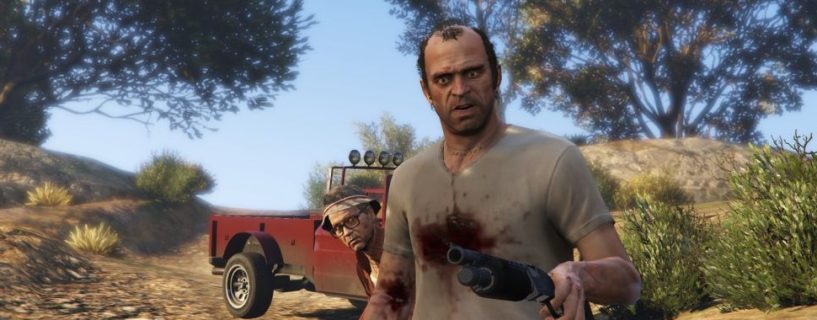
There are times when I look at Los Santos and think ‘why would you even think to build that?’ This is, appropriately, a thought that I often have about Los Angeles. In GTA 5’s case, the tone is different: baffled wonderment as opposed to baffled, despair.
You may also be interested in: BioShock 2 Full Version Free Download Game
What is it: Long-awaited new entry in the world’s most popular open-world crime sim.
Influenced by: GTA 4, Los Angeles
Play it on: Quad-core CPU, 8Gb RAM, 2Gb GPU
Alternatively: Saints Row IV, 90%
DRM Steam: Rockstar Social Club
Price: £40/$60
Release: Out now
Developer: Rockstar Games
Publisher: In-house
Multiplayer: Various activities for 2-32 players
Rockstar has created one of the most extraordinary game environments you will ever visit. I look at it and I wonder at the vast expense of effort required to render every trash bag in every back alley just so. I marvel at the care evident in San Andreas’ gorgeous sunsets, in the way that sunglasses subtly alter the color balance of the world, in the artfully-chosen selection of licensed music designed to accompany your experience. Everything about Los Santos demonstrates the extraordinary amount of thought and love poured into it by hundreds of developers over many years. The abiding irony of Grand Theft Auto 5 is that everybody who actually lives in Los Santos hates it there.
This is the most beautiful, expansive and generous GTA game and also, by some distance, the nastiest and most nihilistic. Rockstar went through a phase, in Bully, Grand Theft Auto IV, and the sadly console-bound Red Dead Redemption, of framing their protagonists as anti-heroes. GTA 4’s Niko Bellic did some terrible things, but he had a downtrodden charm that helped you like him as you piloted him through the underworld. He was surrounded by people who were larger-than-life but ultimately, beneath the surface, people. Among those people were some of Rockstar’s better female characters—Kate McReary, Mallorie Bardas, The Lost and Damned’s Ash Butler.
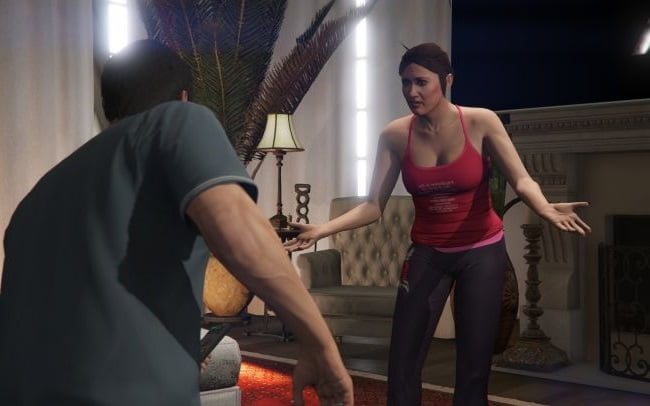
Grand Theft Auto 5 does away with all of that, deliberately but to its detriment. Its trio of protagonists occupy a city full of vapid, two-dimensional caricatures, and they flirt with that boundary themselves. Michael is a middle-aged former bank robber, unhappily married and on the edge of a breakdown. Franklin is a young hood, purportedly principled but willing to do almost anything for money. Trevor is a desert-dwelling, meth-dealing psychopath with a homebrew morality that sits uneasily alongside his capacity for violent cruelty and sexual aggression. The campaign explores their relationship through a series of heists and misadventures as they clash with every L.A. stereotype you might imagine—the bored Beverly Hills housewife, the corrupt fed, the bottom-rung fraudster, the smug technology exec, and so on.
Against this backdrop, it’s only Michael, Franklin and Trevor that appear to have any kind of internal life. I get the impression that this is deliberate, part of the game’s relentless skewering of southern California and indicative of Rockstar’s waning interest in romantic anti-heroes. Trevor’s introduction, in particular, amounts to a particularly explicit ‘fuck you’ to the characters and themes of Grand Theft Auto IV. GTA 5 is heartless in that way, and as a result, I found the narrative difficult to care about. It is ambitious, well-performed, and the production values are extraordinary—but it is also derivative and brutishly adolescent, set in a world where the line between criminality and the rule of law is blurry but where it is always hilarious that somebody might be homo.
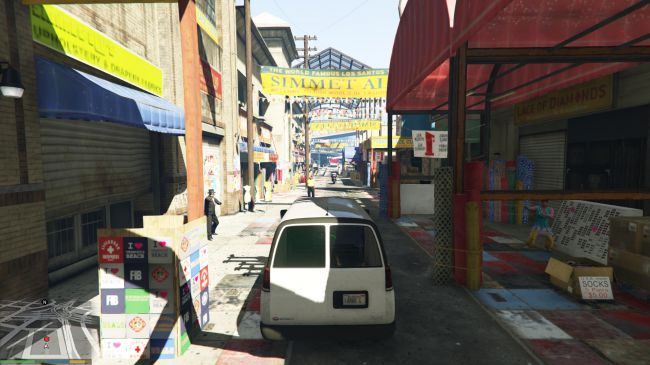
It’s an R-rated episode of The A-Team where the ‘A’ stands for ‘asshole’. The campaign’s best moments come when your cigar-chomping master strategist, insane former military pilot, and talented driver come together, and when you’re given the power to choose how to use each of them. These heists are set-piece missions where you pick an approach and perform set-up tasks in the open world before setting out on the job itself. In the best of them, which occurs later in the campaign, it really does evoke the satisfaction of having a plan come together. Perhaps you position Trevor on the high-ground with a rocket launcher, Michael on foot with a stealth approach, and Franklin in an armored ram-raider. With a button press, you can flick between the three, dynamically orchestrating a crime caper on your own terms.
It is also in these moments that Rockstar’s most ambitious storytelling takes place. Your choice of character, crew, and even certain in-game actions have subtle effects on the dialogue. In an early heist, a crewmember dropped part of the score but, as Franklin, I was able to retrieve it—a side-objective that I’d set for myself but that was subsequently reflected in a later conversation between him and Michael. This is another example of Rockstar’s extraordinary attention to detail, and if the rest of the campaign respected your agency in this way it might overcome its weaker moments.
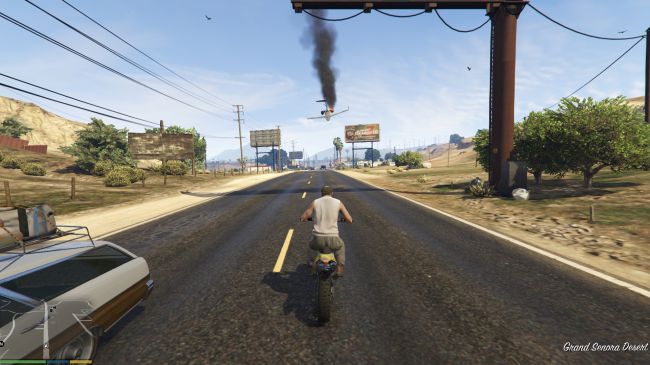
As it is this is a very long game with a lot of filler. There’s much driving from A to B, a lot of conversations in cars, a lot of gunfights with hordes of goons who show up just to run into your gunsights over and over. It’s far richer in set-piece moments than its predecessor—drug trips, aerial heists, dramatic chases—and many of these look incredible even if they’re light on actual interaction. In the best examples, you soak in the atmosphere and happily ignore the fact that you’re only really being asked to follow the on-screen instructions. In the worst examples—instant-fail stealth sequences, sniper missions and so on—it’s harder to ignore the shackles that are placed on the player in order to preserve the game’s cinematic look and feel.
I spent a lot of my time with the campaign frustrated along these lines, bored of the same mission templates that I’ve been playing through since GTA III and making the most of the scant opportunities to play my own way, like Franklin’s refreshingly open assassination missions. Then, inevitably, I’d be doing one of those rote activities—a heavily scripted freeway chase, perhaps—when the magic of that extraordinary world would creep up on me again. It’d hit me: I’m doing 150 km/h along the Pacific Coast Highway at sunset. The rock station is playing 30 Days In The Hole by Humble Pie. It feels incredible, a collision of pop-culture, atmosphere, music, and play that is unique to GTA.
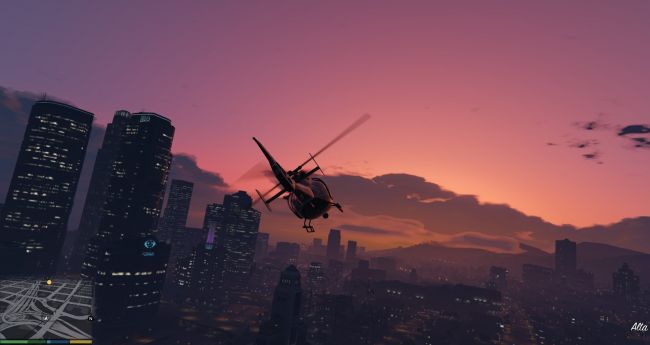
Performance and settings
Reviewed on Intel i5 760, 8Gb RAM, 4Gb GPU
Graphics options DirectX version, screen type (including fullscreen windowed), VSync, camera settings for first person, third person and vehicles, population density and variety, distance scaling, texture quality, shader quality, shadow quality, reflection quality, water, particles and grass quality, post FX, motion blur, depth of field, anisotropic filtering, ambient occlusion, tessellation.
Anti-aliasing FXAA, MSAA, NVidia TXAA, Reflection MSAA
Remappable controls Yes
Gamepad support Yes
Grand Theft Auto 5 ran at 50-60 fps on a midrange rig with most settings on normal or high. On a slightly better system, running a GTX 970, a mixture of very high and ultra settings could be used without framerate loss. I encountered a fair number of texture errors in multiplayer, however, and many players have reported frequent crashes.
Here, then, is the kicker: that forty-plus hour campaign with all of its flaws amounts to an optional fraction of the vast overall package. Step off the main trail and you’ll find fully-functional golf, tennis, races—even a stock market. You’ll find cinemas showing funny short films and fully-programmed TV stations. You’ll find armored trucks to rob, secrets to find, muggers to help or hinder, cults to encounter, vehicles to customize and collect. This is what it looks like when one of gaming’s most profitable enterprises reinvests that profit into the game itself. Rockstar has, quite literally, gone above and beyond the Call of Duty.
The amount of work invested into the first-person mode is further evidence of this. It’s not just a novelty alternative: GTA 5 is a fully-playable FPS, complete with detailed animations for everything from gunplay to getting out your phone. It achieves a similar sense of physical presence to Alien: Isolation, but in a vast open world. Steal an open-top car and go for a cruise in first person, steal a plane, or just go for a walk at night in the rain: there has never been an open-world game that offers this great a variety of atmospheric experiences at this level of detail. Hell, few games of any type have managed it. The only downside is that it’s much more difficult to play and that falling off a bike is so well-realized that it feels like really falling off a bike—people who get motion-sick in first person may suffer.
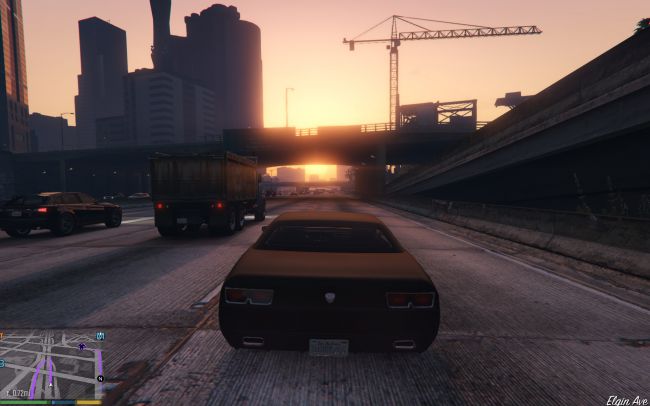
Did I mention that GTA 5 was also a cinematography tool? Unique to the PC version, Director Mode allows you to explore the open world as any character you want, in whatever circumstances you want, and then record, cut and remix those experiences into short films using a deep and accessible toolkit. As crude and exclusionary as the out-of-the-box campaign can be, the option to take this world and make something else out of it is always there, available whether you’re knee-deep in the narrative or cruising south Los Santos with a dozen friends.
Right, yeah: GTA 5 is also an ambitious online game, a sandbox for deathmatch, racing and inventive co-op with MMO-lite progression features set in a world that is an order of magnitude more detailed than any of its contemporaries. The traditional multiplayer options alone amount to a feature-complete additional game. You can build your own tracks for races or use one of Rockstar’s own, and configure your lobbies to account for different times of day, vehicle sets, weapon options—even radio stations. I’ve raced sportscars through the financial district, jetplanes through a wind farm, bicycles down through the hills below the Vinewood sign. There’s also an attack-and-defend siege mode, regular deathmatch, and a hide-and-seek scenario that pits on-foot fugitives against hunters with sawn-off shotguns on motorcycles.
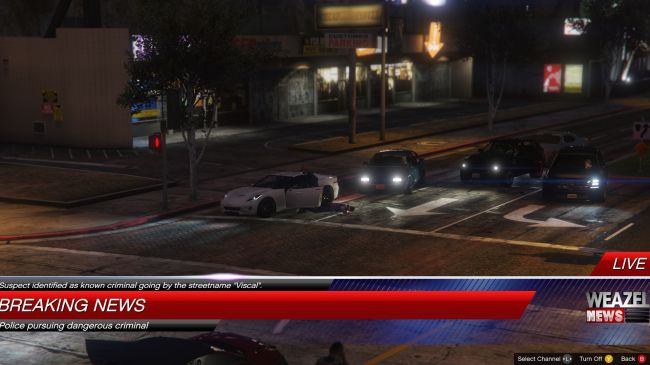
Freeroam is the glue that binds these various experiences together, offering GTA 5’s full open world (albeit with a reduced pedestrian count) for up to 32 players. You can rob stores together, murder each other, set bounties on each other, even pay to send mercenaries after one another when you reach the right level. Your progression is expressed through your expanding selection of customizable weapons, the vehicles you claim and make your own, the apartments you buy where your friends can hang out to drink your booze and watch your TV. As elsewhere, it’s the details that make it: on the TV, for example, you can watch police chases live. These aren’t pre-recorded shows—you’re watching footage of actual players, actually on the run, presented from the point of view of a news chopper complete with Fox News-parodying ticker.
These strengths culminate in heists, multi-part co-op missions similar in structure to their singleplayer counterparts. I’ve always loved asymmetric co-op, particularly the way that interdependency within a team creates moments where you get to shine both as individuals and as a unit. Heists are fantastic for this. I’ve had missions where my only job was to wait in a helicopter to pick up the ground team, but it feels amazing: I’m nervous for them, focused on what I’m doing, waiting for that one moment where I bring her in low and sweep them away with the score—a payout that feels earned in a way that videogame rewards rarely do.
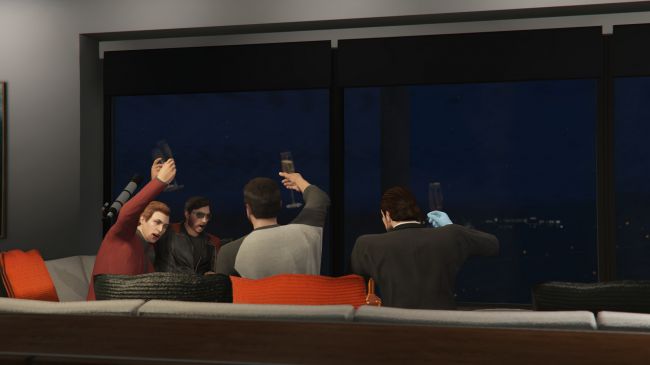
Two major caveats hold me back from saying that GTA Online is good enough to justify your purchase on its own: co-op is rubbish with strangers and it’s littered with bugs and connection issues. Reviewing the game on a mid-range rig, the singleplayer mode was relatively stable. Online, I’ve had the world load without textures, crash outright, and every variant on lag, matchmaking bugs, and disconnections. I understand that it’s nowhere near as bad as it was when it launched on console, but it could be much better.
GTA 5 as a whole survives these problems because it is such a reliable generator of moments that transcend the script, the bugs, and its sometimes-galling linearity. This is particularly true of multiplayer, where the presence of other people injects energy and meaning into the open world. I’ve got as many examples of this as I have had play sessions, but here’s one: having spent a chunk of my ill-gotten heist cash on a high-speed motorcycle, I break into the airport to see if I can reach top speed on those wide, flat runways. It’s rainy and overcast, the rest of Los Santos lost in thick fog. I reach the chainlink fence at the edge of the tarmac and turn, and there, right in front of me, is an eminently-stealable private plane.
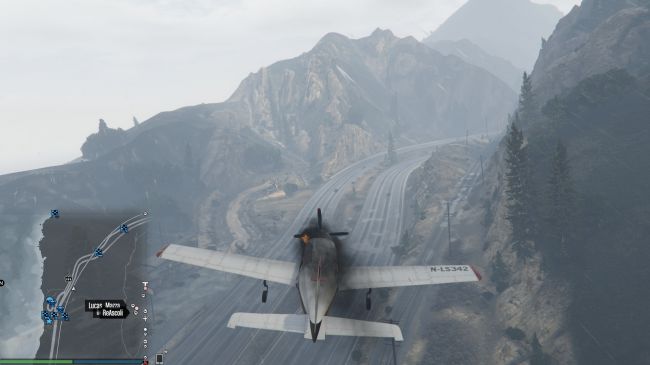
I hop in and take off with no greater plan than ‘get into some trouble’. Ahead, on the map, I can see another player in a helicopter. I give chase, which takes us across the map and into the wilds of Mount Chiliad. Then, from a gully on the mountainside, a tracking rocket explodes upwards and blasts the helicopter and its pilot out of the air. There’s another group of players up there, making their own fun, taking pot-shots at anyone unlucky enough to wander past. I buzz them, close, dipping down into the gully and over a ridge to avoid missile lock. On my second pass, they hit me. Smoke and flame pours from my engine and the prop slowly dies. I lower the landing gear, point my nose down the mountain, and attempt to glide her down to the freeway. It works. I feel no small amount of pride as I touch down in heavy traffic. Slipping from the cockpit, I cast about for something to do next. Then I am hit by a truck and die.
This isn’t something I can repeat and it relies on no way on cinematic motion capture or cynical dialogue. It’s an experience that stands alone, happily gamey, a moment immune to the cultural critique you might apply elsewhere. Moments like this are what push Grand Theft Auto 5 over the threshold from ‘impressive’ and into ‘essential’. Like the city it both loves and hates, there are rough parts of town and people who will piss you off—but there’s also the beach, the country, the skyline, the way the lights of the city play off the surface of the road in the rain. It’s these ever-present things that remind you why so many people might choose to spend so much time in this place. Rockstar did not need to build something this absurdly complex, this quixotic in its attention to detail, but I am glad that they did.
GTA 5, GTA 5, GTA 5, GTA 5, GTA 5, GTA 5, GTA 5,
